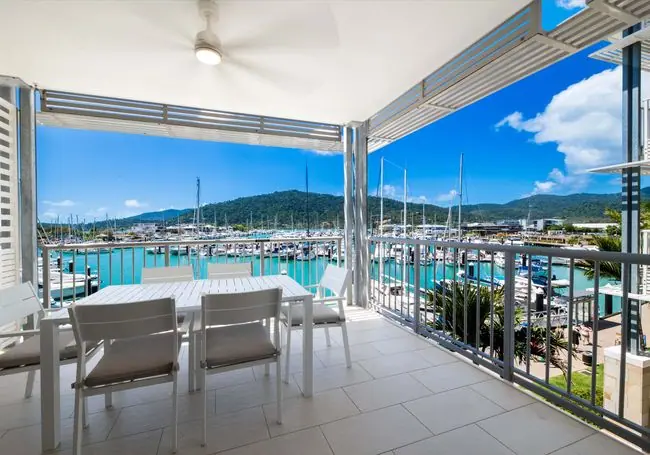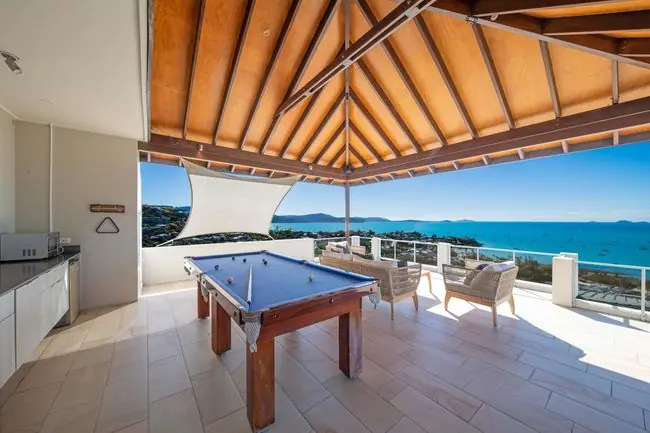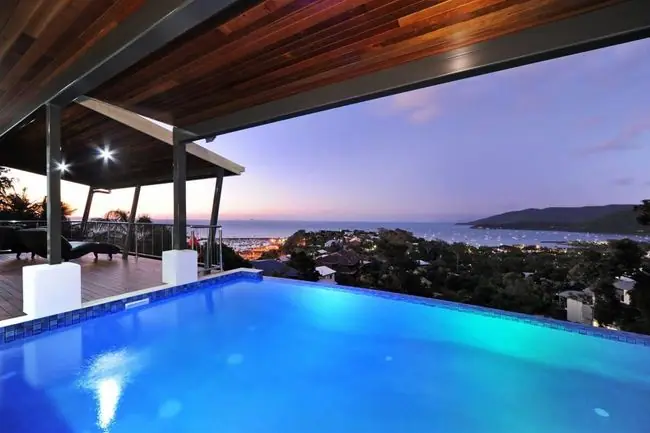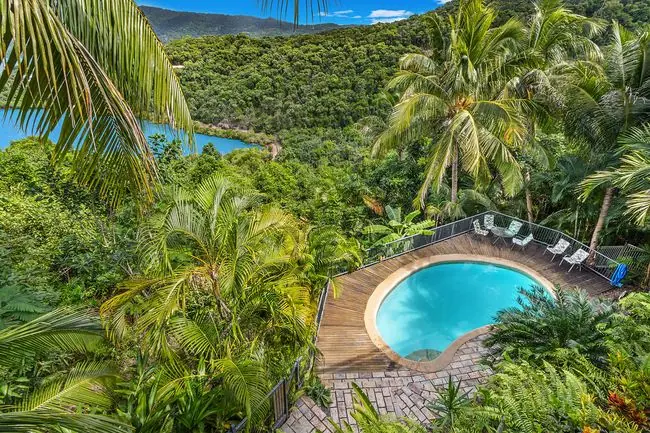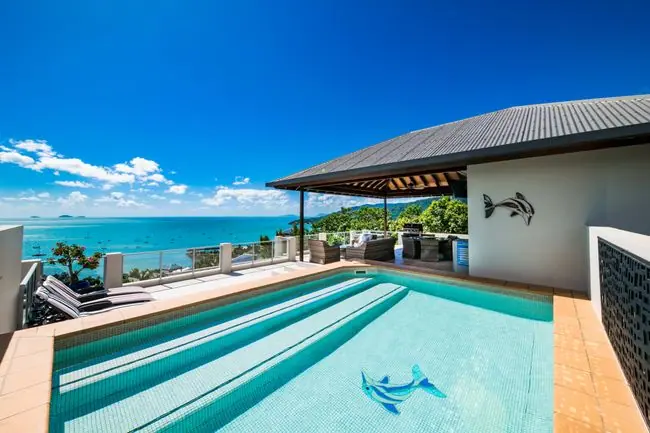
The History of The Whitsundays
Our Volcanic Beginnings
The Whitsunday Islands were originally formed by volcanic action, 110 million years ago. The land that was to become Australia was scattered with volcanoes, and movements of the earth’s crust were slowly but surely breaking up the super-continent Gondwana. Around 45 million years ago Australia broke off from Antarctica, finally splitting up the super-continent Gondwana and leaving Australia on its own. Today, Australia still moves North at a rate of about 3cm every year.
The Whitsundays then lay in a geologically active zone, where volcanic activity continued for 37 million years. Volcanic eruptions spat rock and ash into the air, which fell down on the surrounding land. Layers of this volcanic debris built up and created a solid bedrock, which can still be observed on Whitsunday Island and Hook Island. Hook Island also features Dykes, which are upright bands of darker rock, that was created by lava flowing through gaps in the bedrock.
The Creation Of Our Coastal Mountain Ranges
During this volcanic period, the earth’s tectonic plates moved apart and collided into other tectonic plates, which pushed the land upwards, creating mountain ranges around the Whitsunday coast.
The Rising Of The Sea & Creation Of The Whitsunday Islands
At the end of the last ice age (10,000 years ago) the glaciers melted which caused the sea to rise. The rising sea level drowned a mainland mountain range in the Whitsundays, leaving the higher coastal peaks as islands, which are now known as the 74 Whitsunday Islands.

The Traditional Custodians Of The Whitsundays
The Traditional Custodians of the Whitsundays are the Ngaro Aboriginal people. They are one of the earliest recorded indigenous groups in Australia, observed by Captain James Cook during his voyage through the Whitsunday Passage. The Ngaro people lived throughout the Whitsunday Islands and on the nearby mainland for around 9000 years. They left behind rock art and middens at Hook Island’s Nara Inlet (this cave was used 2500 years ago). There is also an ancient Ngaro stone quarry on South Molle Island, where stone axes and cutting tools were made.
The Naming Of The Whitsundays
On the 3rd of June 1770, Captain James Cook sailed the Endeavour through what is now known as the Whitsunday Passage. They sailed through on ‘Whit Sunday,’ marking the Sunday of the feast for the Christian festival Pentecost. Captain Cook was inspired enough to name the passage as Whitsunday Passage, and the location as the Whitsunday Group of Islands. At that time, the international date line had not been established, so the day that the Whitsundays was discovered was actually a Monday. So really they should be called the “Whitmonday” islands!

How Whitehaven Beach Was Formed
The fine sediment that is suspended in the Whitsunday’s waters scatters sunlight as it penetrates the water. This is what causes the turquoise shade of blue that makes the Whitsundays famous.
To compliment the turquoise waters is the white silica sand at Whitehaven Beach on Whitsunday Island. Geologists don’t think that Whitehaven’s quartz-rich sand came from a local source, because rocks in the Whitsundays do not contain large quantities of quartz. They think that Whitehaven’s bright white sand, drifted north along the Queensland coast carried by prevailing sea currents, millions of years ago.
This travelling sand was then trapped by rocks and headlands to form sand dunes on what is now known as Whitsunday Island. Over the years the sea levels rose and fell around the dunes as ice ages came and went. Over time, impurities were drawn from the sand using fresh water, leaving behind the fine, white silica sand that you see today. At the end of the last ice age (10,000 years ago) when the sea rised to create the Whitsunday Islands, this brought the sea level to the foot of these dunes, creating Whitehaven Beach.

How Our Island Fringing Reefs Were Formed
After the sea rised forming the islands, over time fringing reefs formed in clear waters around the Whitsunday Islands and occasionally along the mainland. These reefs were built by polyps, which are tiny animals that resemble small sea anemones. They have a sac-like body and mouth opening surrounded by tentacles. A single polyp establishes itself by attaching to a submerged rock around the edges of the islands. Then new polyps build from it, forming a coral colony which makes up a fringing reef. These reefs that surround our Whitsunday Islands are popular for snorkeling and diving and have become one of the Whitsunday’s most popular tourist attractions, containing approximately 400 species of corals.
Settlement In The Whitsundays
In the 1860s, European settlement began on the Whitsunday Islands, mainly harvesting hoop pine timber. These hoop pines can still be seen throughout the islands today. They harvested this timber to construct buildings in Bowen which is an hour north. This timber industry operated strongly for 40 years and finally finished up in the 1930s.
In 1883, grazing leases became available in the Whitsundays which caused sheep, cattle and tropical fruit to flourish. This farming meant that ships would visit the Whitsundays delivering supplies and loading wool, cattle and horses for the market.
One of the earliest European settlers to Airlie Beach was Thomas Abell with his wife and nine children, back in 1904. The Airlie Beach area was rainforest back then and has changed immensely over the last 100 years. The Abell Point Marina (renamed to Coral Sea Resort Marina in 2019) and Abell Road were named after the original Abell family.

The History Of The Whitsunday Island Resorts
By the 1930’s, the Whitsundays slowly changed from a pastoral lifestyle to a recreational lifestyle, when farmers started to build galvanised huts with palm thatched roofs and wash basins. They would then charge customers one pound per day, which included scones and fresh tropical fruit from South Molle Island. These customers soon became the very first day trippers from the mainland to Daydream Island, Long Island and South Molle Island.
This change caused the government to think about the future of the islands. As the grazing leases lapsed on the islands, the government changed the status of the islands to National Parks. This is why there are no grazing leases left on the islands today.
These farmers’ huts soon turned into resorts on the islands. Over the years these resorts were upgraded and changed hands multiple times, to become the Whitsunday resorts that we have today. Daydream Island, Hayman Island, Long Island and Hamilton Island are the only islands left in the Whitsundays with open resorts on them today. Lindeman Island is currently having a resort developed which should be completed by 2021.

The Whitsundays As We Know It Today
In 1918, they developed a road between Proserpine and Airlie Beach, the only way to Airlie Beach before this was on foot or by boat. Proserpine is located 20 minutes inland from Airlie Beach and today is home to the main airport in the Whitsundays. Proserpine was named after the goddess of fertility, Proserpinia. The township of Proserpine dates back to the 1870s when people from all over the world arrived to grow and harvest sugar cane in the naturally fertile basin. The township in Proserpine is built around the Sugar Mill, which still provides jobs to a lot of Proserpine locals today.




Cannonvale was named by Commander George Nares, who completed a survey of the land and named the valley observed on the coastline after his assistant ship’s surgeon, Richard Cannon. The district was named Cannon Valley which was the farming land that spread from Airlie Beach to Proserpine. In 1913, a town of Cannonvale was gazetted and in 1916 a sale of land leases occurred. In 1930, a Post Office was built in Cannonvale and in 1938 a jetty was built so that people could travel via ferry from Cannonvale to the Whitsunday Islands. Over the years, three jetties were used in Cannonvale until cyclones destroyed them by 1958.
In 1935, Airlie Beach was named when the Queensland Lands Department put some of the land by the beach up for sale. It is believed that it was named Airlie Beach in reference to a parish in Scotland where Thomas Abell (one of our earliest European settlers) was originally from. In the 1950s, development truly began in Airlie Beach. Below is the earliest photos that we have of Airlie Beach.




In 1962, the islands became more accessible when they developed a road from Airlie Beach to Shute Harbour and they installed a jetty at Shute Harbour. Shute Harbour was the main jetty used to transport people to the islands via ferry up until 2014.

In 2013, the Port Of Airlie Marina was developed in Airlie Beach which took 30 years to be completed. This location was originally known as Muddy Bay, where locals would anchor their boats as shown below. On the land in the top left of this photo is where the Whitsunday Sailing Club is today.

The development of Port Of Airlie was a massive project and included covering Muddy Bay with soil to build the land up. They also dredged the area where the marina was going, to make it deep enough for large ferries.


In 2014, the local ferry company moved to the Port of Airlie Marina, where they still operate from today. In 2017, Cyclone Debbie tore through the town, which destroyed the original ferry jetty and terminals at Shute Harbour. Shute Harbour is still undergoing a $54 million restoration project.
Today, the Whitsunday region is home to approximately 35,500 permanent residents and that is expected to grow due to the strength of the economy. The Whitsunday region encompasses a total land area of 23,862 square kilometers which does not include the islands. There is not much vacant land left in Airlie Beach and Cannonvale to develop, which is why the township has expanded further inland to Cannon Valley. In the future the township will keep expanding inland towards Proserpine.
Source: Tourism Whitsundays, Whitsundays-Australia, QLD Government Parks & Forests, Live Science, Cumberland Charter Yachts, Nomads World & Whitsunday Regional Council.

Why Our Guests Keep Coming Back
Stay Up To Date with Our Specials
Sign up to our newsletter to receive the latest deals and event news.






































